Pewresearch – The photo and video sharing platform Instagram has become especially popular among young adults and teens. The site – a home for online influencers, political and election news and disinformation campaigns – has come under scrutiny after recently leaked research concluded that parent company Facebook knew the use of the site can have negative mental health effects for teenagers, especially teen girls.
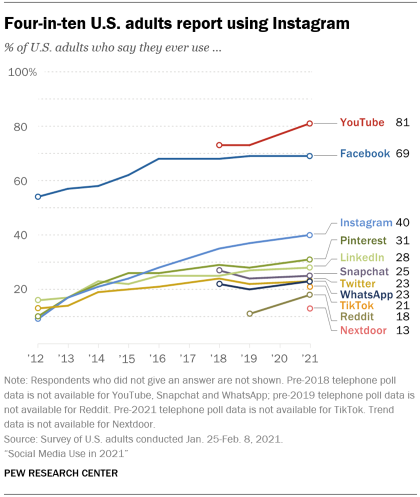
Over the years, Pew Research Center has studied how U.S. adults – as well as teens and children – use and engage with the platform. Here are seven key takeaways from our research.How we did this
Four-in-ten Americans say they ever use Instagram, according to a survey conducted in January and February of 2021. The share of U.S. adults who say they have ever used the site has grown from 9% in 2012, when the Center first began asking about the platform. Despite this growth, much smaller shares of Americans use Instagram when compared with YouTube and Facebook, which are used by majorities of Americans (81% and 69%, respectively).
Young adults are the most likely group to say they use Instagram. Around seven-in-ten Americans ages 18 to 29 (71%) say they ever use Instagram. This compares with smaller shares of older age groups, with 48% of those ages 30 to 49, 29% of those 50 to 64 and just 13% of those 65 and older saying they use the platform, according to Center data from earlier this year.
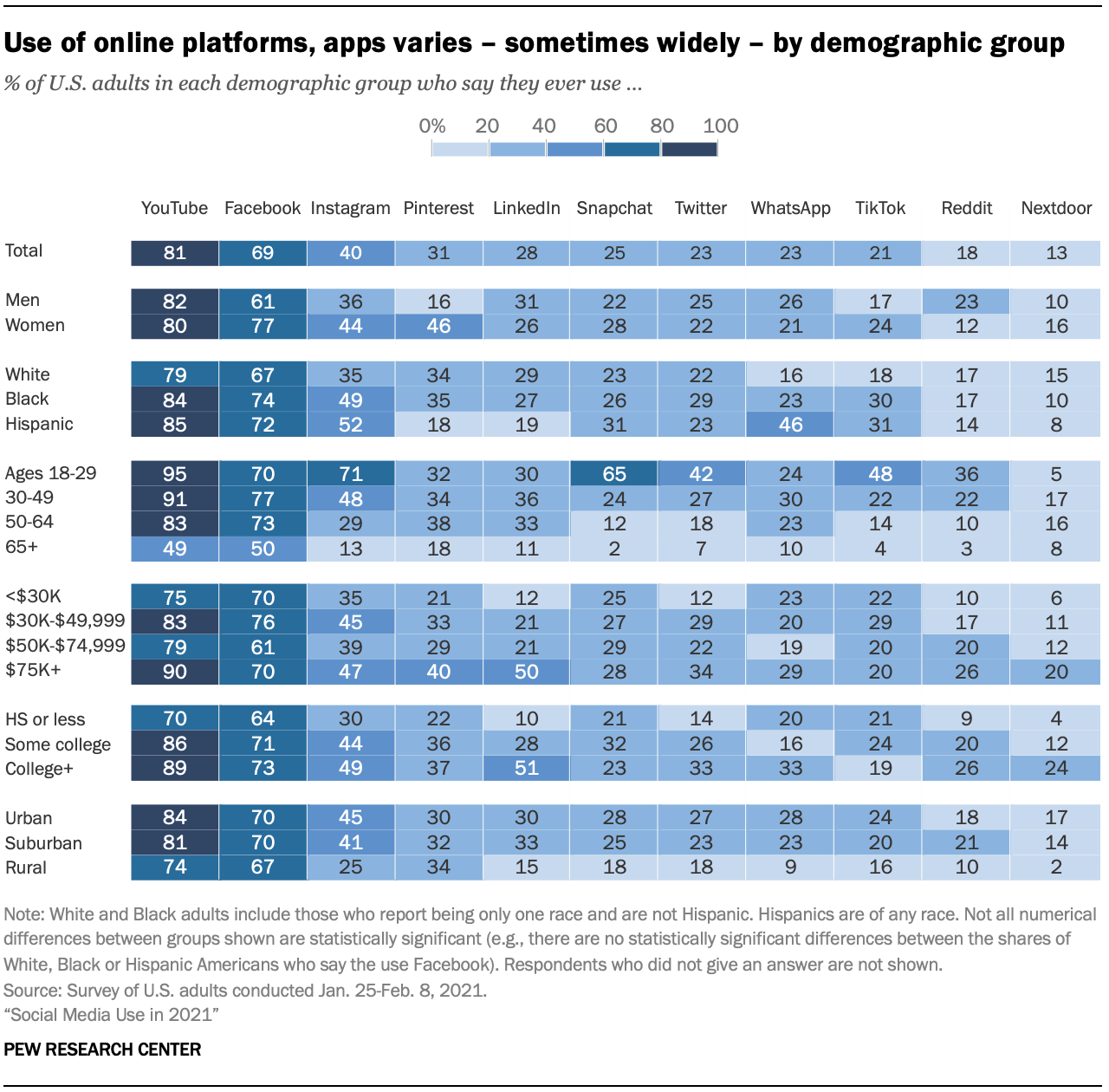
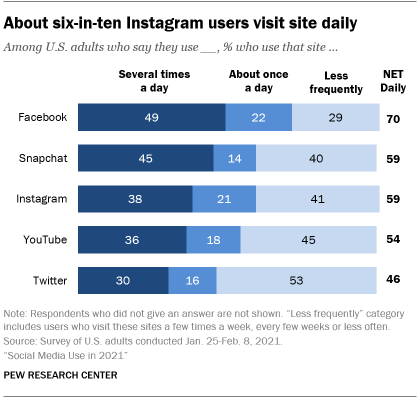
A majority of adult Instagram users in the U.S. say they use the site at least once a day, and 38% say they use the site several times per day. About six-in-ten U.S. adults who use Instagram (59%) say they do so at least once a day. Among younger users, the share is larger: 73% of 18- to 29-year-old Instagram users say they visit the site every day, with roughly half (53%) reporting they do so several times per day. In contrast, 70% of adult Facebook users say they use the platform at least once a day, according to the 2021 survey findings.
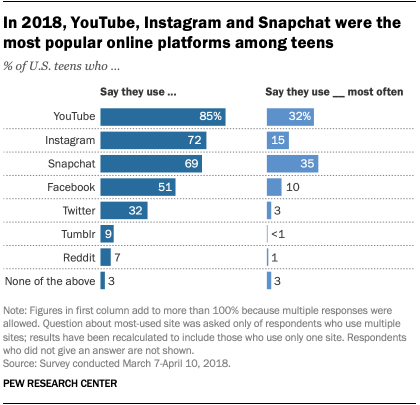
In a spring 2018 survey, roughly seven-in-ten U.S. teens ages 13 to 17 (72%) said they used the site. Large shares of teens also said they used YouTube and Snapchat, according to a Center survey conducted in March and April of 2018. Some 15% of teens said Instagram was the platform they used “most often.” Larger shares said the same about Snapchat (35%) and YouTube (32%).
Children ages 11 and younger also engage with Instagram, though in relatively small shares, according to a spring 2020 survey. Despite Instagram’s age guidelines, which usually restrict children younger than 13 from joining, some 5% of parents of a child age 11 or younger said that, as far as they know, their child uses Instagram. When considering only parents with a child ages 9 to 11, however, this share was 11%. Larger shares of parents with a child 11 and younger said their children used TikTok and Snapchat than said so about Instagram.
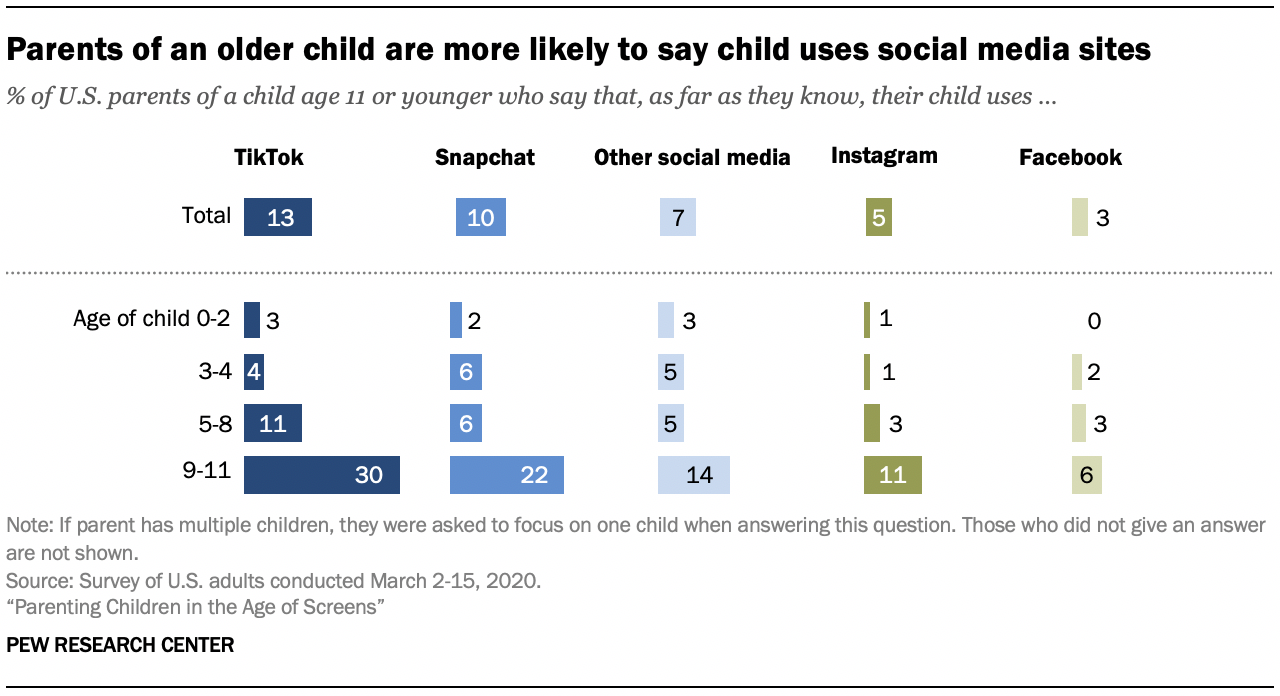
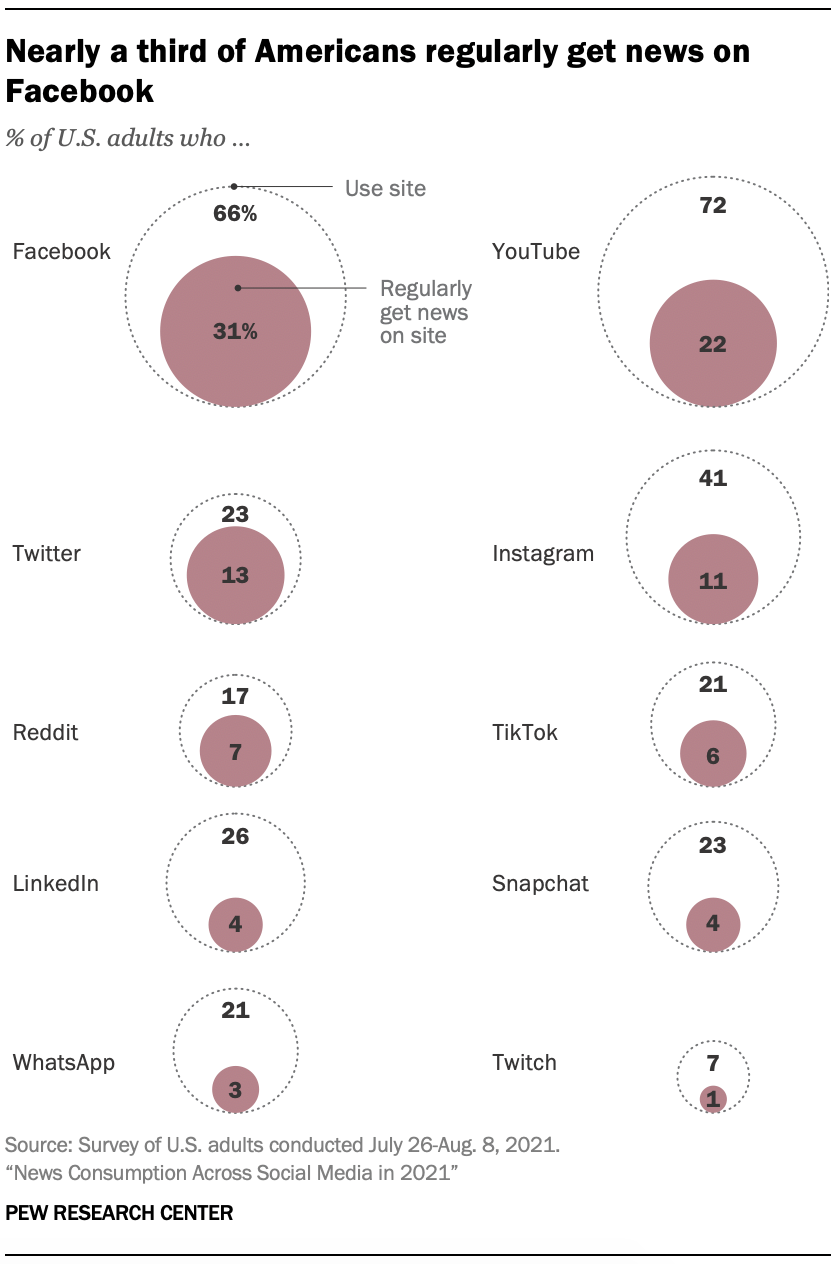
About three-in-ten Americans knew in 2019 that Instagram and WhatsApp are owned by Facebook. In a 2019 survey, Americans were asked questions about a range of digital topics, including some about the business of social media. Some 29% of Americans correctly identified WhatsApp and Instagram as companies owned by Facebook, while 22% answered the question incorrectly. The largest share (49%) said they weren’t sure about the answer to this question.
Instagram is not the topmost social media site for getting news. Around one-in-ten U.S. adults (11%) say they regularly get news on the platform, according to a 2021 survey. That’s far smaller than the shares who regularly get news on Facebook (31%) or YouTube (22%).
There are considerable demographic differences in who gets news from Instagram. Around six-in-ten of the site’s regular news users (63%) are women, while 36% are men, according to the same 2021 survey. Adults under the age of 30 make up 44% of the site’s news users, while smaller shares are older.
In a fall 2019 survey, few Americans trusted Instagram as a place to get political and election news. Just 6% of U.S. adults said they trusted Instagram as a place to get political and election news, with a much larger share (42%) saying they distrusted it for such information. Some 37% of U.S. adults said they neither trusted nor distrusted the site for this type of news.
Note: This is an update of a post originally published Oct. 21, 2019, and written by Brooke Auxier, former research associate.






